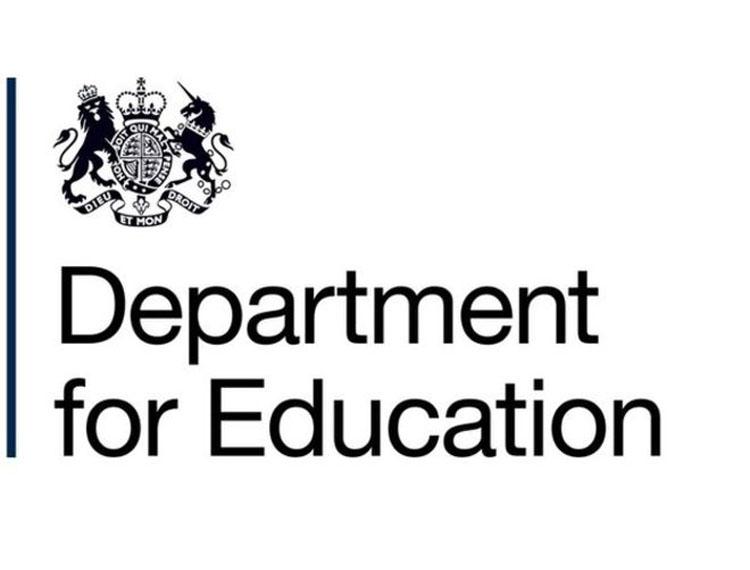Detailed guide: Provide training for postgraduate teaching apprenticeships

How providers and lead schools can provide training for this ITT route, including who’s eligible, funding rules, apprenticeship levy and advertising courses.
Guidance for candidates who want to apply to be a postgraduate teaching apprentice is available on the Get into Teaching website.
There is separate guidance for employers and local authorities who want to recruit for the postgraduate teaching apprenticeship.
Overview
The postgraduate teaching apprenticeship is an employment-based initial teacher training (ITT) route leading to qualified teacher status (QTS).
Providers
You must agree on the overall structure of the apprenticeship with employers before the apprentice starts.
Providers are higher education institutes (HEIs) or school-centered initial teacher training (SCITT) providers who are accredited to recommend QTS and provide the training to the apprentice.
You can offer the postgraduate teaching apprenticeship alongside other employment-based ITT programmes.
Apprenticeship levy
Schools can get value for their apprenticeship levy contribution by using it to pay for the apprenticeship training and assessment costs.
Schools must:
- partner with ITT providers to provide the training
- have a Commitment Statement with you and the candidate before the apprenticeship starts
More information about the funding and the apprenticeship levy is available.
Apprentices
Apprentices are trainee teachers employed by schools. The apprenticeship allows them to combine paid work with on and off-the-job training.
Employers
Employers are the school or local authority that employs the apprentice.
Lead schools
Lead schools hold apprenticeship places for schools in a school direct partnership. Lead schools can also be providers.
Additional grant funding
Schools in a school direct partnership can access additional grant funding to help meet the costs of the apprentice’s salary.
Requirements for providers
As for any other teacher training routes, apprentices must meet the ITT entry requirements
Eligibility
You can only provide the postgraduate apprenticeship training if you’re:
- an accredited ITT provider
- on the register of apprenticeship and training providers (RoATP)
- an accredited ITT provider operating as a subcontractor to a provider on the register that can provide apprenticeship training up to a limit of £100,000 a year
Providers to non-levy paying schools
You can provide training to non-levy paying schools if you:
- are an accredited ITT provider
- have a non-levy contract with the Education and Skills Funding Agency (ESFA)
Email [email protected] to get a list of providers.
New providers
You can apply to the register of apprenticeship training providers at any time.
As an approved ITT provider, you will be exempt from certain parts of the application process.
Email [email protected] if you have any questions about becoming an accredited ITT provider.
Training period
Apprentices must train for a minimum of 12 months. The apprenticeship can start at any time of the year.
Structure of the apprenticeship
The apprentice must:
- be employed by the school
- spend 20% of their paid hours in off-the-job training
- be assessed by you to make sure they meet the standards for QTS
- take an end-point assessment (EPA)
Off-the-job training includes developing the knowledge, skills, values and behaviours set out in the teachers’ standards.
End-point assessment (EPA)
Use the register of end-point assessment organisations (RoEPAO) to:
- find a list of EPA organisations
- register your interest to become an EPA organisation
The EPA is a holistic test, which includes a:
- lesson observation
- professional discussion
The full EPA criteria are available in the teacher assessment plan which you can download from the Institute for Apprenticeships’ teacher standards webpage.
EPAs must be carried out by other accredited ITT providers that have been separate from the training or employment. This is to ensure the EPA is fair and there is no conflict of interest.
Apprenticeship agreement
Before the apprenticeship starts, you must:
- obtain evidence that the apprentice has an apprenticeship agreement with the employer
- have a commitment statement with the apprentice and the employer
More information about the apprenticeship agreement is available in the funding rules for providers.
Funding
You must agree the total cost of the apprenticeship training and assessment with the employer.
The employer is responsible for paying the full cost of training and assessment and the trainee’s salary.
There is a completion element to the funding. 20% of the total training cost or the funding band maximum (whichever is lower) will be withheld until the apprentices complete their end-point assessment (EPA). For more detailed information, please refer to the ESFA’s funding rules for providers.
Training and assessment costs
Levy paying schools
Levy paying schools can use up to £9,000 of their apprenticeship service account to cover training and assessment costs for each apprentice they employ. This will be paid directly to you from the employer’s apprenticeship service account.
Non-levy paying schools and schools with insufficient funds
These schools are eligible to get funding through government-employer co-investment.We will pay 95% of the training costs and the school will pay 5% of the total negotiated training cost up to £9,000 for apprenticeships started on or after April 2019.
Salary
Schools can get up to £19,400 in additional grant funding to contribute towards the apprentice’s salary depending on:
- the subject the apprentice is training to teach
- the location of the employing school
Information on how schools can access this funding is available in the guidance for employers.
General funding information is available in the Postgraduate teaching apprenticeship funding manual.
Recruitment: what lead schools must do
Choose a provider
You must chose an ITT provider on the RoATP before you can get permission to recruit.Training places are held by the school direct partnership.
Get permission to recruit
Use the database of trainee teachers and providers (DTTP) to get permission to recruit. Email [email protected] if you do not have an account.
You must have permission to recruit before you advertise.
You do not need permission to recruit if you do not want DfE funding.
You’ll be expected to make requests for permission to recruit for other schools in your partnership. You can do this using the DTTP.
Advertise courses
Use the UCAS website to register as a new provider.
More information on managing teacher training courses is available on UCAS.
You must set courses up on UCAS web link to advertise courses online.
You can add additional information about courses using the publish teacher training courses tool using your DfE sign-in account.
The courses will be listed in find postgraduate teacher training courses, DfE’s online search service for potential teachers.
You can also place an advert on recruit an apprentice. It will not affect your funding if you do not do this.
You can find out more about setting up and managing teacher training courses by visiting the secure providers’ section of the UCAS website.
If you have not registered as a provider, you can do this on the UCAS site.
Grant funding agreements (GFA)
Grant funding agreements are for lead schools with permission to recruit.
You’ll only get your grant funding once you have a GFA with us.
These steps show you how you can get your GFA.
-
Apply for grant apprenticeship funding using the DTTP.
-
Complete the grant offer letter (GOL) that we will send you following your application for funding, including the highlighted sections and the signature of your accounting officer.
-
Return your GOL to GFA[email protected].
-
Keep the countersigned GOL we send to you as this is part of your GFA and contains important terms and conditions.
Lead schools
You can apply for grant apprenticeship funding at any time in the year if you are a lead school.
Maintained schools
You must ask your local authority to appoint an accredited ITT provider from the register of apprenticeship training providers.
Register trainees on the database of trainee teachers and providers (DTTP)
School-centred initial teacher training (SCITTs) must record apprentices on the DTTP.
Use the steps below to register apprentices.
-
Go to ‘route’ field and select ‘postgraduate teaching apprentice route’.
-
Register your apprentice on DTTP.
-
Link your apprentice to a specific calendar period so they’re recorded in the correct academic year.
HEIs who submit data to higher education statistics authority (HESA) should follow their own registration process.
Ofsted
The postgraduate teaching apprenticeship will be inspected as part of your normal ITE Ofsted inspection.
Contact
Please email [email protected] if you want to discuss:
- the postgraduate teaching apprenticeship route
- how apprenticeships benefit school workforce planning
Published 19 June 2019 Contents











Responses